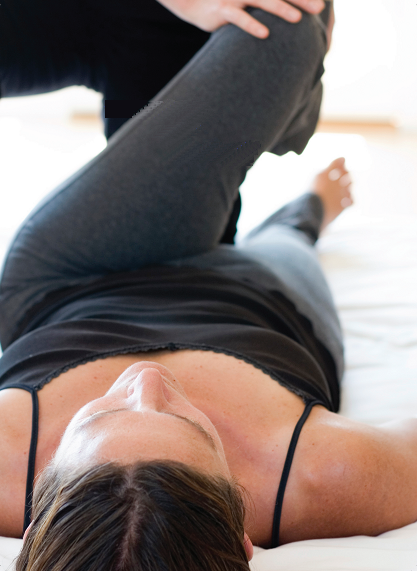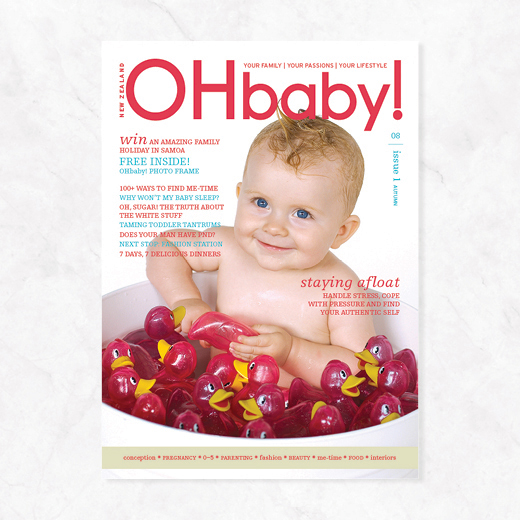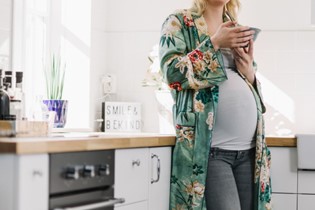4 Steps to post-baby fitness

When you've just had a baby, exercise is probably the furthest thing from your mind. But exercise not only reduces stress and tension, it gives you more energy and helps you to sleep better at night - even when your baby won't! Our fitness expert Lou James talks about how to safely get back into an exercise routine after giving birth.

Getting out and doing some exercise is great for your physical and mental health. Fit mums have more energy throughout the day, are less likely to get sick, and are less stressed. Regular exercise releases the physical and emotional tensions that being a parent brings your way. Here are some simple steps to help you safely start back into an exercise routine while juggling the needs of a young baby.
Step 1: Start slowly, and don't expect to bounce back to your pre-pregnancy fitness routine immediately.
Having a baby is one of the most exciting and rewarding things you will do in your life. But it can also have a major impact on your body. During pregnancy and childbirth, you go through a cascade of physical changes, from loosening of the ligaments in your hips and pelvis, to changes in your centre of gravity. Your muscles get stretched and weakened and your joints are placed under more stress. Many of these changes can predispose you to injury so it is important to start slowly. By choosing exercises targeted at strengthening and toning the muscles most affected by pregnancy first, you will be able to get back to your pre-pregnancy fitness routine quicker.
However, if you experienced back or pelvic pain during your pregnancy, talk to your GP, midwife or physiotherapist before starting an exercise programme.
If you are finding it difficult to do pelvic-floor exercises or you leak urine when you cough, sneeze or laugh, it is best to sort this problem out before returning to exercises such as sit-ups, general exercise classes or any form of vigorous exercise.
Step 2: Choose exercises targeted at toning the muscles most affected by your pregnancy.
Lower abdominal and pelvic-floor exercises are perfect for easing your postnatal body into an exercise routine. These exercises are easy to do at home and you don't need any specialised fitness equipment. Many obstetricians and midwives suggest waiting until your six-week postnatal check before beginning to exercise. This is probably good advice in relation to joining an exercise class, but there is plenty you can do on your own at home in the first few weeks. However, if you had a Caesarean, it's wise to wait until your six-week check.
Lower abdominal strengthening
An important part of getting your abdominal muscles back into shape is paying attention to the deepest layer of muscle, called the transversus abdominus. Here is an exercise to help strengthen this area:
• Kneel on all fours and, keeping your back flat, draw your tummy button in towards your spine and hold for a few seconds. You should feel the muscles at the side of your abdomen tightening, but your back should not move. Keep breathing normally.
• Repeat 10 times.
Pelvic floor exercises
These muscles tire easily, so it's best to do several contractions repeatedly throughout the day rather than in one session:
• Sit on a firm chair, leaning slightly forward with your feet flat on the floor, hip-width apart. Place one hand under your buttocks and one hand on your abdomen.
• Your pelvic floor muscles, which lie between your legs, should not be touching the chair seat. Tighten these muscles, as if trying to stop the flow of urine when emptying your bladder.
• Hold the muscles for a count of four while continuing to breathe normally, then release. You should feel the release.
• Do not tighten your buttock muscles or pull in your abdomen.
Step 3: Do a "rec check" before you move on to more strenuous exercise.
In a few women, the abdominal muscles can become over-stretched during pregnancy. This condition is called "diastasis rectus abdominus". Leaving this condition untreated may increase your chances of developing back pain and will make it harder for you to gain a flat tummy. You will usually be checked for diastasis rectus abdominus while you are in hospital, just after you have had your baby. If not, you can do the following check yourself:
• Lie flat on your back with your knees bent.
• Place the fingers of your right hand, palm facing down and fingers pointing towards your pubic bone, just above your belly button.
• Breathe in and then, as you breathe out, gently lift your head and shoulders off the floor as though you are doing a sit-up.
• You should be able to feel your tummy muscles coming together as you try to sit up. You may need to try a few times before you feel anything.
• A gap of two finger-widths or less is considered normal after having a baby. If your gap is three finger-widths or more, you will need to start doing some pelvic-floor and lower abdominal exercises and avoid sit-ups.
• If the gap remains at three finger-widths or more after a couple of weeks, ask your GP to refer you to a women's health physiotherapist who can give you some specific exercises to help the problem.
Step 4: Buy a good bra and hit the pavement.
Getting outside and walking with your baby in a pram or stroller is a great way to begin exercising. If you are lacking in motivation, try to meet with a friend and exercise together, or join an exercise class.
It's a good idea to exercise after breastfeeding your baby and to make sure that you wear a supportive bra. You may find that feeding bras are not supportive enough and you need to wear a sports bra while exercising.
Try and work out for at least 30 minutes of exercise. Include exercises targeted at toning the muscles most affected by pregnancy, and exercise at least three to five days a week.
If you weren't active during your pregnancy, start with a 15-minute programme and gradually increase to 30 minutes.
If you develop any aches or pains, ask your GP or physiotherapist for advice.
Some other good exercise options for new mothers include pilates and yoga classes, swimming, gym circuit training, and stroller boot camps.
The physical and emotional demands a young family places on you as a mother are huge. Therefore, it is important that you enjoy your exercise routine and it invigorates you. After your workout, you should feel good and have more energy, not feel totally exhausted and run-down.
Reduce the duration or intensity of your workouts and make sure you have some rest days if you feel you are getting run-down.
I hope these simple steps help to encourage you to make exercise part of your weekly routine and you start enjoying the benefits of being a fit mum!

Lou James is an experienced physiotherapist and the founder of re:ab, a specialised physiotherapy and pilates studio in Auckland. She is dedicated to quality pilates instruction as well as the design and implementation of specialty programmes for pregnant women, new mothers and clients with specific medical issues. Lou is the mother of two young boys. For more information, visit www.reab.co.nz

AS FEATURED IN ISSUE 1 OF OHbaby! MAGAZINE. CHECK OUT OTHER ARTICLES IN THIS ISSUE BELOW

















